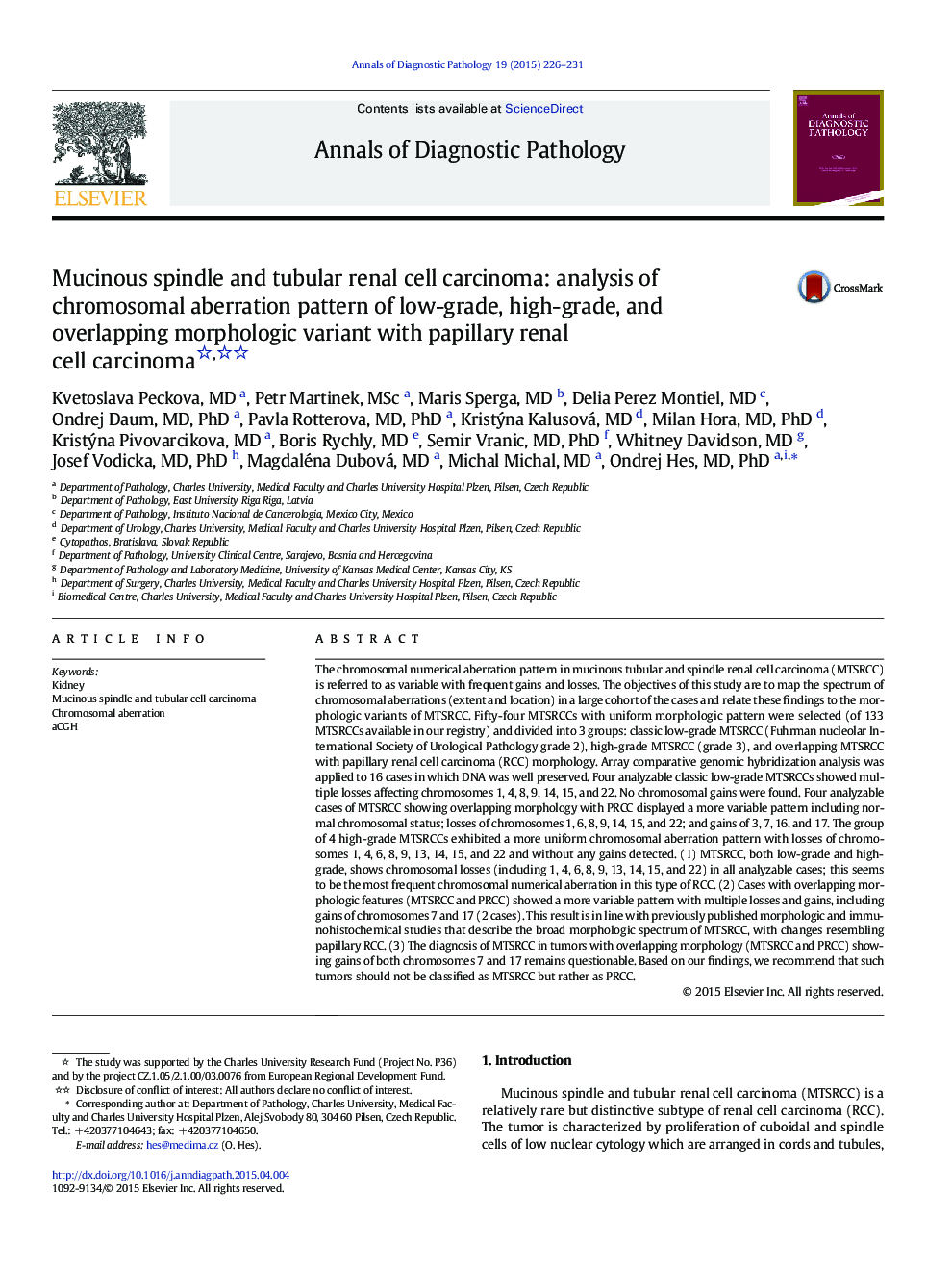| Article ID | Journal | Published Year | Pages | File Type |
|---|---|---|---|---|
| 4129774 | Annals of Diagnostic Pathology | 2015 | 6 Pages |
The chromosomal numerical aberration pattern in mucinous tubular and spindle renal cell carcinoma (MTSRCC) is referred to as variable with frequent gains and losses. The objectives of this study are to map the spectrum of chromosomal aberrations (extent and location) in a large cohort of the cases and relate these findings to the morphologic variants of MTSRCC. Fifty-four MTSRCCs with uniform morphologic pattern were selected (of 133 MTSRCCs available in our registry) and divided into 3 groups: classic low-grade MTSRCC (Fuhrman nucleolar International Society of Urological Pathology grade 2), high-grade MTSRCC (grade 3), and overlapping MTSRCC with papillary renal cell carcinoma (RCC) morphology. Array comparative genomic hybridization analysis was applied to 16 cases in which DNA was well preserved. Four analyzable classic low-grade MTSRCCs showed multiple losses affecting chromosomes 1, 4, 8, 9, 14, 15, and 22. No chromosomal gains were found. Four analyzable cases of MTSRCC showing overlapping morphology with PRCC displayed a more variable pattern including normal chromosomal status; losses of chromosomes 1, 6, 8, 9, 14, 15, and 22; and gains of 3, 7, 16, and 17. The group of 4 high-grade MTSRCCs exhibited a more uniform chromosomal aberration pattern with losses of chromosomes 1, 4, 6, 8, 9, 13, 14, 15, and 22 and without any gains detected. (1) MTSRCC, both low-grade and high-grade, shows chromosomal losses (including 1, 4, 6, 8, 9, 13, 14, 15, and 22) in all analyzable cases; this seems to be the most frequent chromosomal numerical aberration in this type of RCC. (2) Cases with overlapping morphologic features (MTSRCC and PRCC) showed a more variable pattern with multiple losses and gains, including gains of chromosomes 7 and 17 (2 cases). This result is in line with previously published morphologic and immunohistochemical studies that describe the broad morphologic spectrum of MTSRCC, with changes resembling papillary RCC. (3) The diagnosis of MTSRCC in tumors with overlapping morphology (MTSRCC and PRCC) showing gains of both chromosomes 7 and 17 remains questionable. Based on our findings, we recommend that such tumors should not be classified as MTSRCC but rather as PRCC.
